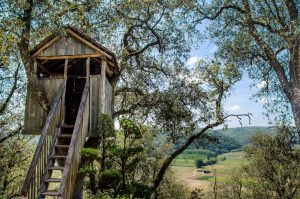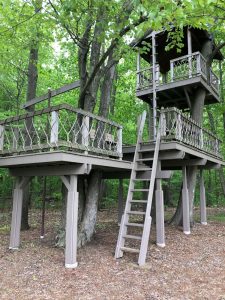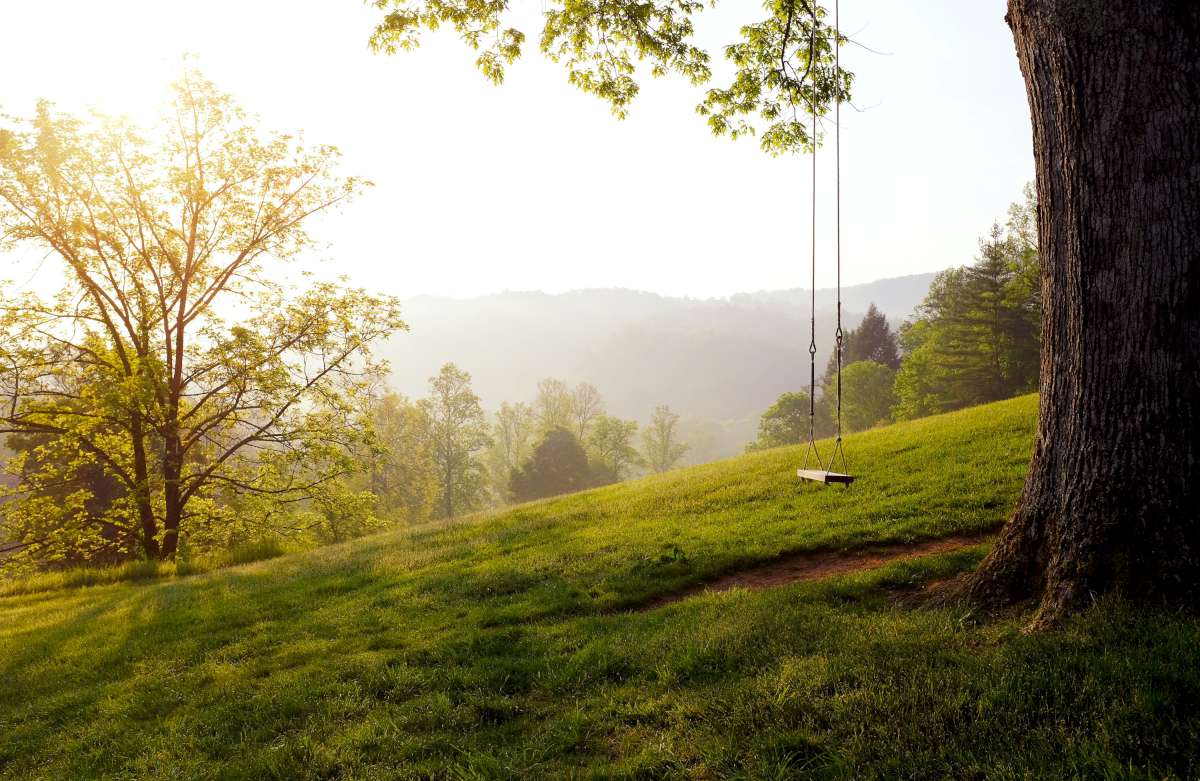During my work as a fruit tree consultant, I receive a wide variety of questions, and occasionally these include considerations on the best trees on which to fix a swing or a tree house. In particular, one reader described her garden, which has a very large oak tree, a slightly smaller chestnut tree, and a very old cooking apple tree. On all three trees, the main side branches are well above head height and have a diameter of 6 to 8 inches. The three trees are well spaced out and are beautiful at all times of year. There is a carpet of green grass underneath those trees. The reader asked, which of those trees is best suited to building a tree house inside the tree canopy, and which would be good for a swing, which could also serve as a seat for grown-ups?

First and foremost, it is important to remember the inherent danger of a tree house, as it puts people, above all children, at a certain height above the ground. When considering tree houses and swings attached to the branches of a tree, safety has to be the main consideration. Other points to be borne in mind are whether there are any power lines close or nearby, the height of the tree house above ground level, and how to ensure that no accidents could occur, above all for children. It is also important to consider the health of the tree itself, and whether the wood can be trusted to take the weight of the tree house with its occupants.
Secondly, in the UK, basic planning permission is required for even a relatively simple tree house. So, make an appointment with the county surveyor to avoid planning problems at a later stage.
I don’t wish to go into practical details about building tree houses. On the internet, there is lots of information for the construction of tree houses large and small, with some helpful suggestions on building the steps leading up to the tree house. Safety is of paramount importance at every stage.

However I can provide some information on the best tree to select for a tree house. Mature oaks are without doubt the best choice, because they often have a broad base created by the spreading lower branches, so that a strong floor can be built at a relatively low level. The tree has to be at least 40-50 years old to be a good candidate. Ideally the base of the tree house will be secured to main branches which have an angle close to 90 degrees with the main trunk. Floor beams and planks that have been treated to stop deterioration should be used. It is a good idea to prune the tree at tree house platform level, both to provide good all-round views, and to ensure that drying winds can keep the tree house’s main structure well aired and in good natural light.
The tree house should be positioned as close as possible to the tree trunk. The ladder and railings should be firmly fixed, and all measures preventing the steps from becoming slippery have to be taken. Any electrical appliances present in the treehouse are best run from a battery, in order to avoid sudden blackouts if the main electricity supply should cut out due to bad weather or any sort of damage to the mains cable.
So in summary, as long all safety aspects have been fully covered and the ladder itself is securely fitted, the structure is able to withstand strong winds, and the planning officer has given his official approval, then all will be fine.
Regarding the reader’s original question and the reference to a swing, we can consider the situation in which there is no tree suitable for this function, in which case one would have constructed a rectangular frame, tall enough to make the swing work well. So the selection would be of a tree with the best horizontal branch of good diameter at the correct height, so that the swing’s main ropes can be fixed satisfactorily. Once again, bear safety in mind when planning the best way of fixing the swing ropes.

